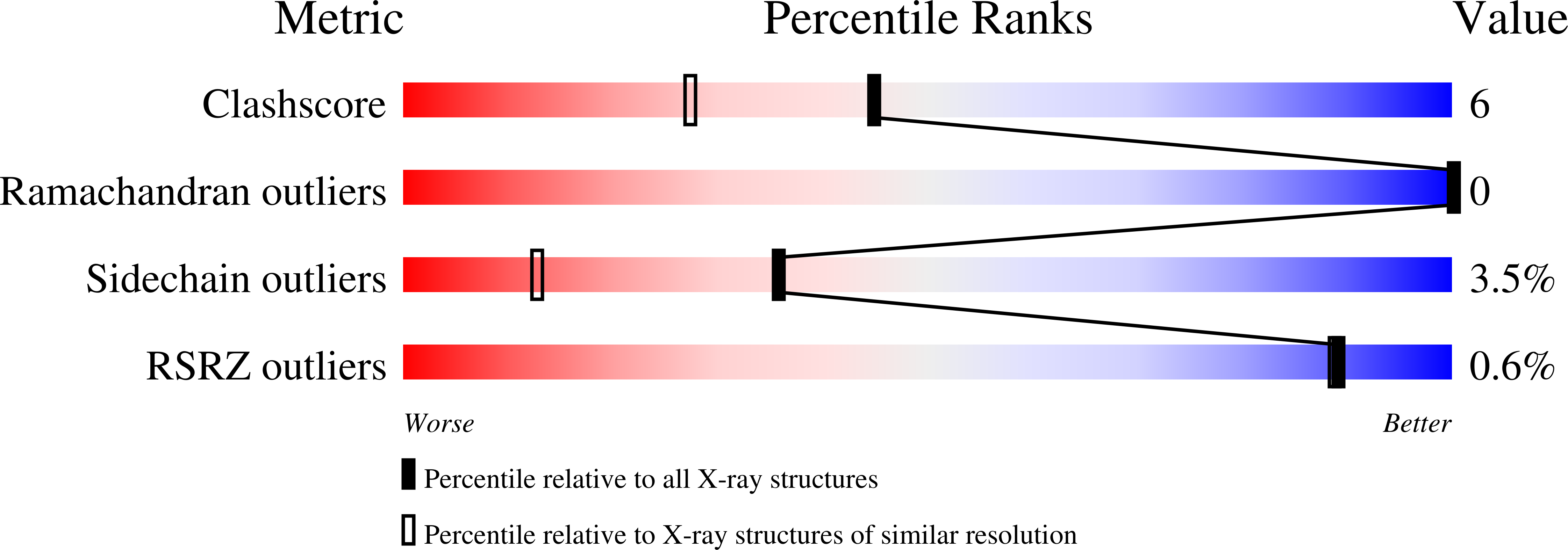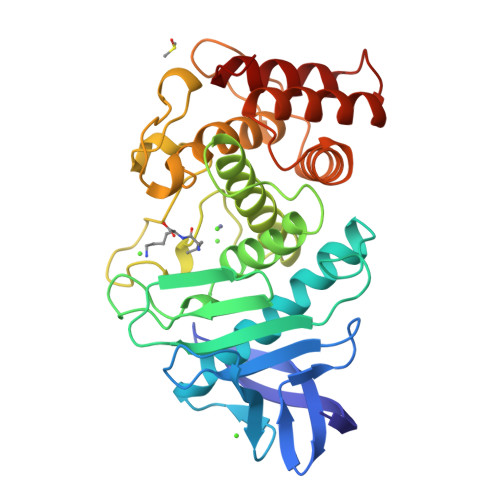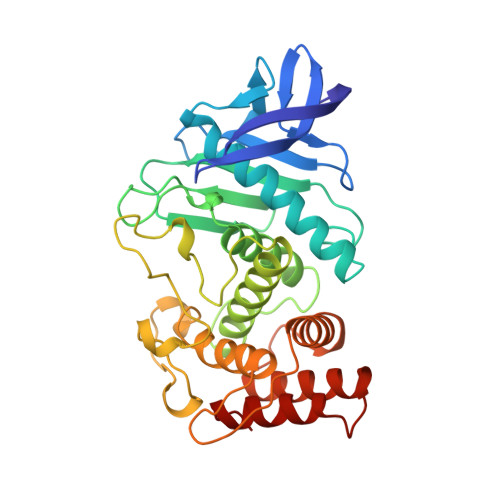Structural comparison suggests that thermolysin and related neutral proteases undergo hinge-bending motion during catalysis.
Holland, D.R., Tronrud, D.E., Pley, H.W., Flaherty, K.M., Stark, W., Jansonius, J.N., McKay, D.B., Matthews, B.W.(1992) Biochemistry 31: 11310-11316
- PubMed: 1445869
- DOI: https://doi.org/10.1021/bi00161a008
- Primary Citation of Related Structures:
8TLN - PubMed Abstract:
Crystal structures are known for three members of the bacterial neutral protease family: thermolysin from Bacillus thermoproteolyticus (TLN), the neutral protease from Bacillus cereus (NEU), and the elastase of Pseudomonas aeruginosa (PAE), both in free and ligand-bound forms. Each enzyme consists of an N-terminal and C-terminal domain with the active site formed at the junction of the two domains. Comparison of the different molecules reveals that the structure within each domain is well conserved, but there are substantial hinge-bending displacements (up to 16 degrees) of one domain relative to the other. These domain motions can be correlated with the presence or absence of bound inhibitor, as was previously observed in the specific example of PAE [Thayer, M.M., Flaherty, K.M., & McKay, D.B. (1991) J. Biol. Chem. 266, 2864-2871]. The binding of inhibitor appears to be associated with a reduction of the domain hinge-bending angle by 6-14 degrees and a closure of the "jaws" of the active site cleft by about 2 A. Crystallographic refinement of the structure of thermolysin suggests that electron density seen in the active site of the enzyme in the original structure determination probably corresponds to a bound dipeptide. Thus, the crystal structure appears to correspond to an enzyme-inhibitor or enzyme-product complex, rather than the free enzyme, as has previously been assumed.
Organizational Affiliation:
Institute of Molecular Biology, University of Oregon, Eugene 97403.























